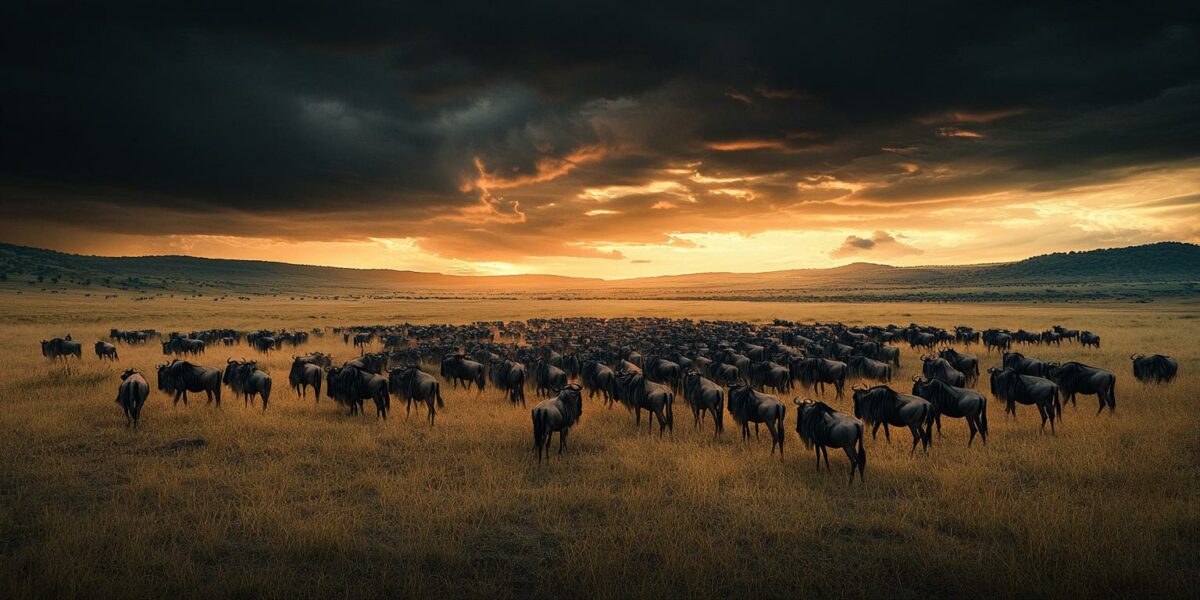Alarming Climate Changes in Serengeti and Maasai Mara
The Mara-Serengeti ecosystem, encompassing the Maasai Mara and Serengeti National Park, is a renowned wildlife sanctuary. Annually, a spectacular migration unfolds, with millions of animals traversing the land. This phenomenon is crucial for predators and scavengers, and significantly supports local economies through tourism and conservation.
However, climate change poses a significant threat. The ecosystem’s balance relies on stable weather patterns. Extreme weather events disrupt these patterns, affecting wildlife, vegetation, and water availability. Our study reveals that over recent decades, the region has experienced substantial climatic shifts, impacting biodiversity.
Our research team, including experts from various institutions, has been examining these changes since 1913. Findings indicate a rise in temperature and erratic rainfall patterns, leading to severe droughts and floods. This environmental turmoil is exerting immense pressure on the region’s flora and fauna.
Increased competition for resources is evident, as wildlife, livestock, and human populations struggle for access. The changing climate is altering migration and breeding patterns, with a noticeable decline in wildlife numbers. These shifts underscore the urgent need to address climate impacts.
Unraveling the Drivers of Climate Shifts
Our analysis links the weather changes in the Mara-Serengeti to global climate change. By studying the Southern Oscillation Index and the Indian Ocean Dipole, we observe significant influences on East Africa’s climate. These oceanic and atmospheric patterns are pivotal in weather fluctuations across the region.
The Southern Oscillation Index involves pressure differences between Tahiti and Darwin, often signaling El Niño or La Niña. These phenomena impact global weather, with El Niño bringing more rain to East Africa and La Niña causing droughts. Our study shows increased frequency and intensity of these events.
The Indian Ocean Dipole, a seesaw-like pattern of ocean temperatures, also affects regional weather. Warmer waters near Africa lead to increased rainfall, while cooler waters result in droughts. Our findings indicate a steady strengthening of the dipole, contributing to more severe weather patterns.
Key observations include:
- More frequent and intense droughts and floods
- Erratic shifts in migration and breeding cycles
- Increased competition for dwindling resources
Impact on Wildlife and Ecosystem Dynamics
The dramatic weather changes have profound effects on wildlife populations and biodiversity. Field observations, historical reports, and recent data reveal significant alterations in wildlife patterns. Droughts, floods, and temperature changes are contributing to these transformations.
Our investigations identify trends in wildlife data, linking changes to specific weather anomalies. We also ruled out other factors like diseases or habitat destruction to isolate climate effects. The findings highlight the ecosystem’s vulnerability to extreme weather conditions.
Several impacts from the changing weather patterns have been observed, such as starvation, increased predation, and poaching during droughts. Additionally, fluctuations in rainfall and temperature are shifting migration patterns, affecting reproduction and survival rates.
Heavy rains, while replenishing resources, can also lead to habitat destruction and increased disease prevalence. These complex interactions between climate and wildlife stress the necessity for adaptive management strategies to mitigate climate impacts on the ecosystem.
Challenges and Future Outlook
The implications of climate change on the Mara-Serengeti ecosystem are far-reaching. Observations from Kenya’s wildlife departments and national archives document the ongoing shifts in wildlife dynamics. Contemporary studies further underscore these alarming trends.
Our analysis links specific weather anomalies, like droughts, to declines in wildlife populations. By systematically excluding other potential causes, we pinpoint the primary role of climate fluctuations. This reinforces the need for comprehensive strategies to address the impacts.
Further understanding of climate patterns can help predict future shifts and inform conservation efforts. By focusing on adaptive management, we can enhance the resilience of ecosystems and the communities dependent on them.
Ultimately, addressing climate change’s impact on this iconic region requires coordinated efforts and innovative solutions to safeguard its rich biodiversity and ecological balance for generations to come.



Amelia_Zenith
Fascinating read! Can you provide more information on how the Indian Ocean Dipole is being monitored?
LoganUmbra
Are local communities involved in the conservation strategies? They must be feeling the impacts firsthand.
paisley
Well, there goes my dream of a picture-perfect safari in the Serengeti. 😕
daisyvelocity
How can tourists help in the conservation efforts while visiting these places?
taylorsolar6
So, are humans to blame for this too? Seems like we’re always the villains in these stories!
Liam_Zenith
Great article! Thanks for shedding light on such a crucial issue. More people need to know about this!
mattheweclipse
Is there any hope left for the wildlife in the region if these trends continue? Seems quite grim.
GraysonOracle
Since 1913? That’s a long time. What changes have been most surprising in your studies?
Aiden
This is heartbreaking! Climate change seems to be impacting every corner of the globe. We need immediate action!
Eli_Stardancer
What specific measures are being proposed to mitigate these climate impacts on the Serengeti? 😟